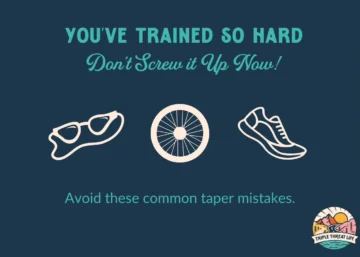
The difference between a dream and a goal is having a plan that will take you there.
Not great at setting goals or sticking with resolutions? Don’t worry. It’s something a lot of people struggle with.
If we’re talking about New Year’s resolutions in particular, research has shown that 38.5% of adults make resolutions each year, but 23% quit in the first week and only 36% make it past the first month (where we are right now). Only 9% consider themselves to be successful in keeping their resolution. Not great odds…
I think there are a few reasons why people struggle to keep resolutions. First, there’s a difference between a goal and a resolution.
Although a resolution is intended to enact some type of change, it’s often vague and generalized, like – “I want to get better at swimming.” In contrast, a goal is specific, measurable, and has a time-component, such as- “I want to become a better swimmer by committing to practicing 3 times a week for 6 months where I will focus on drills to lower my 100 time from X to X.”
We’re not just talking about athletes here. Within the general population, 48% of people want to exercise more, which is great! In fact, the top three resolutions all have to do with improving health- amazing!
But when asked why people “fail” at keeping their New Year’s resolutions or achieving their goals, the answers given include loss of motivation, being too busy, or a shift in priorities. I think the “pass or fail mentality” is a big part of the problem (and something we’ll get into later) but another reason why people aren’t very successful at achieving goals is because they have a hard time setting good ones.
 When I was younger, I played a lot of different sports before I started doing triathlon- softball, soccer, tennis, karate, cheerleading, and equestrian. There’s something about that last one- working with an animal partner- that really showed me how to set goals that were both realistic and achievable.
When I was younger, I played a lot of different sports before I started doing triathlon- softball, soccer, tennis, karate, cheerleading, and equestrian. There’s something about that last one- working with an animal partner- that really showed me how to set goals that were both realistic and achievable.
First, a goal needs to be specific and measurable. Also, a goal must be clearly defined and have a time frame. A goal requires a detailed plan of action with steps to follow.
Here are a few examples of not-so-great-goals:
- I don’t want to be the slowest runner in my training group.
- I want to improve my bike split.
- I need to eat more healthy meals.
Here are those same goals, but given a makeover!
- Over the next 3 months, I will work on my running form and aerobic threshold to improve my X time from an X to an X.
- During the off-season, I will work to increase my FTP on the bike by doing X threshold-focused sessions and X strength sessions, X times a month.
- Over the next 4 months, I will commit to making a healthy dinner 3 times a week that incorporates protein, vegetables, and grains.
See the difference?
Look at this example: “Over the next 3 months, I will work on my running form and aerobic threshold to improve my X time from an X to an X.” It’s specific and measurable because you can check progress by looking at improvement in pace over a specific distance. Also, it has a time frame of 3 months and is clearly defined with a detailed plan of action to follow that includes working on running form and improving aerobic threshold.
Still, just because you set a great goal, that doesn’t mean you will achieve it, at least not right away… Give yourself a little grace and be flexible when things don’t go exactly as planned. I don’t think about goals as a “pass or fail” proposition. Since when did you achieve something the first time you tried it? I normally don’t.
 Here are more great tips I’ve learned over the years that help with setting and achieving goals.
Here are more great tips I’ve learned over the years that help with setting and achieving goals.
#1- It’s best if goals are framed in positive terms. Instead of describing a goal in a negative manner of what not to do, reframe your way of thinking to what you want to do.
#2- Write down your goal and keep it in a place where you will look at it every day.
#3- Keep a record of progress towards your goal. Seeing consistent improvement helps with motivation.
#4- Don’t get frustrated if you slip up, make a mistake, or don’t see progress right away. All that matters is that you keep trying.
#5- Find a group of like-minded people that support you, and in turn, will support your efforts toward achieving your goal.
Remember the 5 Steps to Setting Great Goals:
Make sure your goal is…
- Specific
- Measurable
- Clearly defined
- Has a time frame
- Has a detailed plan of action with steps to follow
There’s so much more I could write about this topic, like the difference between process-driven goals and results-driven goals and which work best, but I’ll save that for another time…
For now, best of luck in setting, and reaching, your goals!
If you’re new to the blog, I drop new posts on Tuesday and Thursday of each week. Be sure to follow @bblife234 and @thetriplethreatlife on Instagram to find out when they’re live.


